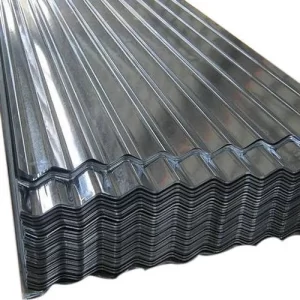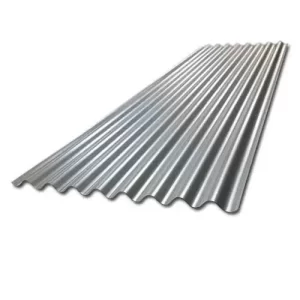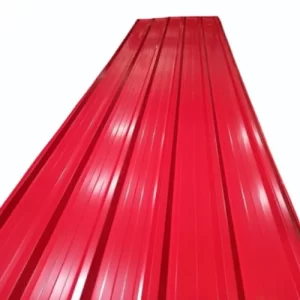GI Sheets
GI Sheets: The Ultimate Guide to Galvanized Iron Sheets
Introduction to GI Sheets
Galvanized Iron (GI) sheets have become a staple in construction, manufacturing, and various industrial applications. Known for their durability, corrosion resistance, and versatility, GI sheets are widely used across different sectors. This comprehensive guide will delve into everything you need to know about GI sheets, including their characteristics, benefits, applications, maintenance, and frequently asked questions (FAQs).
What are GI Sheets?
GI sheets are made from iron or steel that has been coated with a layer of zinc to prevent corrosion. This galvanization process involves hot-dipping the metal into molten zinc or electroplating it with a zinc coating. The result is a sheet that boasts excellent durability and longevity, making it ideal for a variety of applications.
Key Features of GI Sheets
- Corrosion Resistance: The zinc coating acts as a barrier, protecting the underlying metal from moisture and environmental factors that cause rust and corrosion.
- Strength and Durability: GI sheets possess high tensile strength, making them suitable for structural applications where load-bearing capabilities are essential.
- Lightweight: Compared to other materials like stainless steel, GI sheets are relatively lightweight, making them easier to handle and install.
- Versatility: GI sheets can be easily cut, shaped, and formed to suit various applications, from roofing to signage.
- Cost-Effectiveness: The production of GI sheets is generally economical, making them an affordable choice for many projects without compromising quality.
Benefits of GI Sheets
- Long Lifespan: The protective zinc layer significantly extends the lifespan of the sheets, often lasting for decades with minimal maintenance.
- Ease of Fabrication: GI sheets can be easily fabricated into different shapes and sizes, allowing for a wide range of applications.
- Low Maintenance: Unlike other materials that may require regular maintenance or painting, GI sheets are relatively low-maintenance, only needing occasional cleaning.
- Aesthetic Appeal: Available in various finishes and colors, GI sheets can enhance the visual appeal of buildings and structures.
- Eco-Friendly: Zinc is a naturally occurring element, and the recycling of GI sheets is a straightforward process, contributing to sustainability.
Types of GI Sheets
GI sheets come in several types, catering to different needs and applications. Here are some common types:
1. Hot-Dip Galvanized Sheets
These sheets are immersed in molten zinc, forming a thick coating that provides exceptional corrosion resistance. Hot-dip galvanized sheets are commonly used in outdoor applications due to their durability.
2. Electro-Galvanized Sheets
Electro-galvanized sheets undergo an electroplating process where zinc is deposited onto the metal surface. This method produces a thinner coating compared to hot-dip galvanization, making these sheets suitable for indoor applications.
3. Pre-painted GI Sheets
These sheets are coated with a layer of paint before galvanization. The pre-painting process provides an additional layer of protection and allows for a variety of aesthetic finishes, making them ideal for decorative applications.
4. Plain and Corrugated Sheets
GI sheets are available in both plain and corrugated forms. Corrugated sheets offer increased strength and are commonly used for roofing and wall cladding, while plain sheets are often used in manufacturing and industrial applications.
5. Special Coated GI Sheets
Some GI sheets come with additional coatings to enhance specific properties, such as fire resistance or enhanced UV protection. These sheets are designed for specialized applications where standard GI sheets may not suffice.
Applications of GI Sheets
GI sheets are incredibly versatile and find applications across various industries. Here are some common uses:
1. Roofing and Cladding
GI sheets are widely used for roofing due to their lightweight and durable nature. They can be easily installed and provide excellent protection against weather elements.
2. Wall Panels
Used in both commercial and residential buildings, GI sheets serve as wall panels, providing structural integrity and aesthetic appeal.
3. Automotive Industry
In the automotive industry, GI sheets are used to manufacture body panels, structural components, and other parts due to their strength and corrosion resistance.
4. Furniture and Fixtures
GI sheets are used in the production of furniture, shelves, and storage solutions, offering durability and aesthetic versatility.
5. Industrial Equipment
Many industrial applications, including machinery and equipment housing, utilize GI sheets for their robustness and ability to withstand harsh environments.
6. Agriculture
In agriculture, GI sheets are used for constructing storage facilities, greenhouses, and other structures that require durability and weather resistance.
How to Choose the Right GI Sheets
When selecting GI sheets for your project, consider the following factors:
1. Thickness
GI sheets are available in various thicknesses. Choose a thickness suitable for your application, considering factors like load-bearing requirements and environmental conditions.
2. Type of Galvanization
Decide between hot-dip and electro-galvanized sheets based on your project requirements. Hot-dip sheets are ideal for outdoor applications, while electro-galvanized sheets work well for indoor use.
3. Size and Dimensions
Determine the size and dimensions you need for your project. GI sheets can be custom-cut to fit specific requirements.
4. Coating and Finish
If aesthetics are a concern, consider pre-painted GI sheets that offer a variety of colors and finishes. Ensure the coating is suitable for your environment to enhance durability.
5. Manufacturer Reputation
Choose GI sheets from reputable manufacturers known for quality. Check for certifications and customer reviews to ensure you are getting a reliable product.
Maintenance of GI Sheets
While GI sheets are relatively low-maintenance, proper care can enhance their longevity. Here are some maintenance tips:
- Regular Cleaning: Clean the surface periodically to remove dirt, debris, and contaminants that may cause corrosion.
- Inspect for Damage: Regularly inspect GI sheets for any signs of damage, such as dents or scratches that may compromise the zinc coating.
- Repair Coatings: If the protective coating is damaged, consider touch-up painting or applying a protective sealant to prevent corrosion.
- Prevent Moisture Accumulation: Ensure proper drainage and ventilation around GI sheets to prevent moisture buildup, which can lead to rust.
- Avoid Contact with Dissimilar Metals: If possible, avoid direct contact with other metals that can lead to galvanic corrosion.
Frequently Asked Questions (FAQs)
1. What are GI sheets made of?
GI sheets are primarily made of iron or steel coated with a layer of zinc to provide corrosion resistance.
2. What is the thickness range of GI sheets?
GI sheets are available in various thicknesses, typically ranging from 0.3 mm to 3.0 mm. The thickness you choose will depend on the specific application and requirements.
3. How are GI sheets manufactured?
GI sheets are manufactured through a process called galvanization, which involves coating the base metal with zinc. This can be done via hot-dipping or electroplating.
4. Can GI sheets be painted?
Yes, GI sheets can be painted. However, it is essential to use compatible paints and primers designed for galvanized surfaces to ensure proper adhesion.
5. Are GI sheets suitable for outdoor use?
Yes, GI sheets are highly suitable for outdoor applications due to their corrosion resistance, especially when hot-dip galvanized.
6. How do I clean GI sheets?
Clean GI sheets using mild soap and water. Avoid harsh chemicals or abrasive cleaners that can damage the zinc coating.
7. How long do GI sheets last?
The lifespan of GI sheets can vary based on environmental conditions, but they typically last between 10 to 30 years, depending on the quality of galvanization and maintenance.
8. Are there any health risks associated with GI sheets?
When used as intended, GI sheets pose minimal health risks. However, proper safety measures should be taken during handling and installation, such as using gloves and masks to avoid exposure to sharp edges or dust.
9. Can GI sheets be recycled?
Yes, GI sheets are recyclable. The recycling process is straightforward, making them an environmentally friendly option.
10. What industries commonly use GI sheets?
GI sheets are used across various industries, including construction, automotive, agriculture, and manufacturing, due to their versatility and durability.
Conclusion
GI sheets are a reliable and versatile solution for a wide range of applications, offering durability, corrosion resistance, and cost-effectiveness. Their ability to withstand harsh environmental conditions makes them a preferred choice in construction, manufacturing, and beyond.
When choosing GI sheets, consider your specific needs, including thickness, type of galvanization, and intended application. With proper maintenance, GI sheets can provide long-lasting service, enhancing the quality and safety of your projects.








